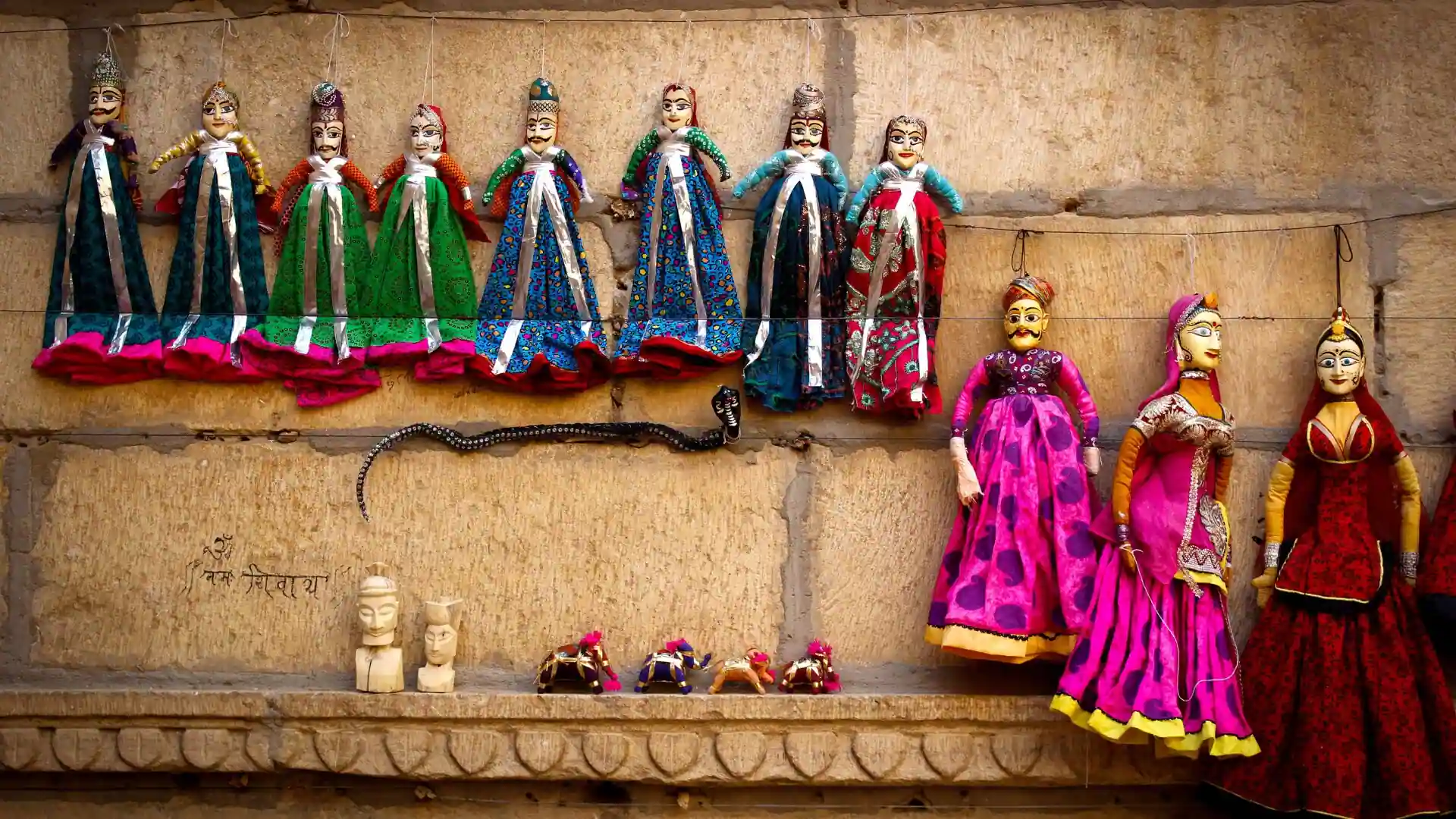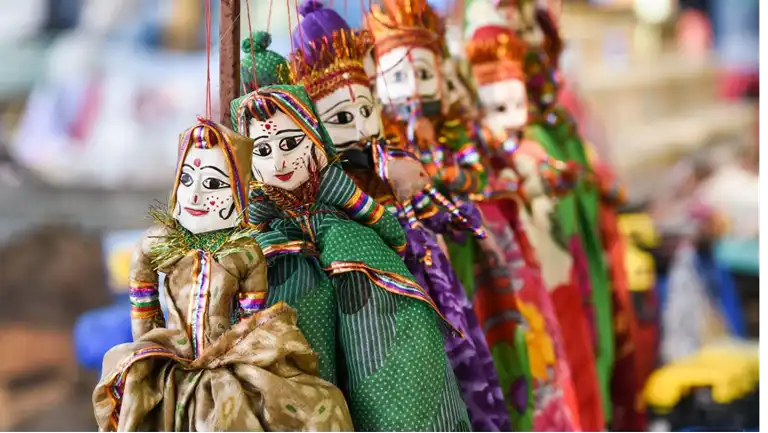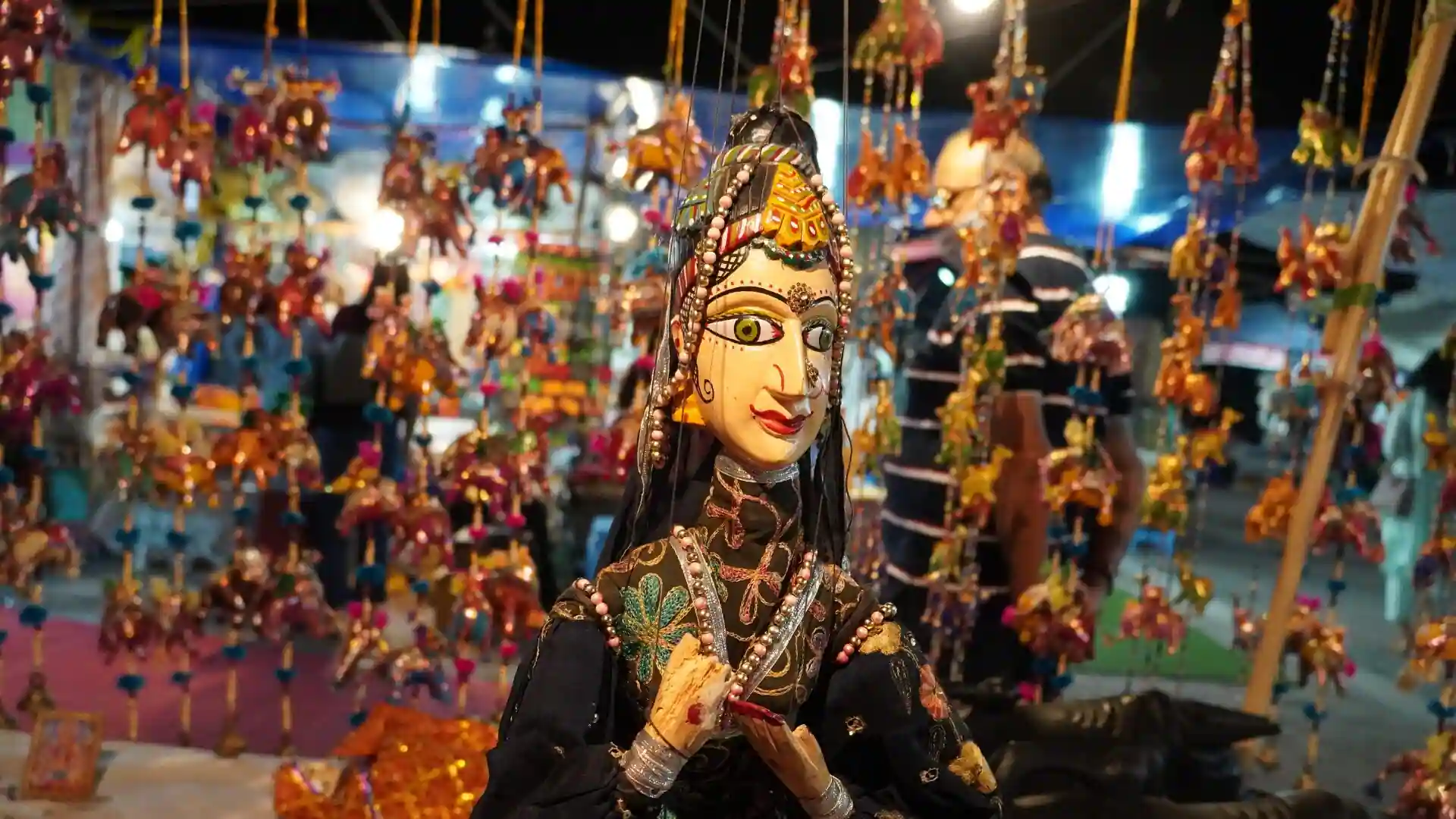Puppetry in Rajasthan: A Legacy of Storytelling and Craftsmanship
Puppetry Tales, India’s got a mad old-school vibe with puppetry, especially in Rajasthan, where it’s all about those iconic “kathputlis.” This isn’t just some kiddie show—it’s a legit art form where puppeteers work their magic with rods and strings, making those wooden dolls come alive with epic stories. Rajasthan’s kathputli game is so strong, it even scored a Geographical Indicator (GI) tag from WIPO. But hey, it’s not all smooth sailing—modern puppetry and high-tech stuff are throwing some serious competition their way!
A puppet’s basically a lifeless object that puppeteers bring to life with some slick moves using strings and rods. The word “puppet” comes from the Latin “pupa” and French “poupee,” both meaning “doll,” with the cute lil’ “et” tag meaning “small.”
In India, puppets are called putraka, putrika, and puttalika in Sanskrit these all spinning off from the word “Putra,” which means “son.” The puppeteer’s title, “sutradhar,” straight-up translates to “the term “sutradhar,” meaning “the one who pulls strings,” has its roots in Bharata’s ancient Natya Shastra from the 2nd century.
. Puppets aren’t just mini-human lookalikes—they’ve got their own swag with stylized features and symbolic vibes. You gotta treat ’em with care—they’re like storytelling pros in doll form!

ALSO READ: Balarama in the Shadows: A Heroic Tale Yet to Be Told
The Art of Puppetry: Colors, Music, and the Heartfelt Craft
In puppetry, colors play a big role—like red, yellow, and white are for the holy VIPs. Since black and crimson are reserved for the villains like devils and monsters, some puppets are dressed to resemble gods, and their blue shades reflect their divine vibes and aura. The jewelry, headgear, outfits, and bling on these puppets are carefully coordinated to create a perfect, harmonious look.
For music, the dholak (drum) is the star of the show. Along with cymbals and some killer chanting, the whole crew—mostly the ladies—teams up to create that magical vibe. Behind the scenes, they even use two wooden planks stacked together to make some cool sound effects. Talk about creative sound design, desi style!
Puppeteers put their heart and soul into their craft, mixing talent with pure dedication to perfect their skills. Over the years, puppetry has not just entertained people but also passed on lessons about morals, spirituality, and history. It’s like a family tradition that every generation proudly carries forward.
From Tradition to Passion, a Craft for All Generations
Kids start young, learning the art of pulling strings and bringing puppets to life. From perfecting the puppet’s moves to memorizing plays and dialogues, it’s all part of the game. In some communities, when a girl gets married, her dad or relatives gift her a puppet doll—it’s their way of keeping the puppetry legacy alive.

Puppetry ain’t just for the old-school families anymore. This can do anyone with the right skills and passion can jump in and make it their thing. These days, some folks are even making a full-on career out of it! When a puppet’s time is up, there’s a whole vibe of respect—they’re floated down the river with proper rituals, almost like saying goodbye to an old friend.
This craft’s all about patience, focus, and a pinch of magic. It’s been passed down through generations. Kids learning the tricks of the trade super early—like how to pull strings like a pro and nail those dialogues. What used to be a family tradition is now open to anyone ready to dive into this age-old art and keep the magic alive!
The Ancient Origins of Puppetry in India: From Myth to Craft
It is believed that puppetry originated in India around the fifth century BCE. However, puppetry is a global art form with various roots worldwide, as noted in Kamala Chattopadhyay’s Handicrafts of India. Despite this, historical records suggest that puppetry originated solely in India.
One key discovery supporting the ancient origins of puppetry is the finding of a clay bull with a detachable head tied to a thread during the Harappan Civilization (2500 BCE). This discovery indicates that puppetry has a long and rich history in the subcontinent.
Puppetry has been practiced and performed throughout India, as evidenced by several literary works, including the Kural from Tamil Nadu.
Another notable link to puppetry can be found in the Tamil classic Silappadikaram, which discusses the art form in the second century BCE. Additionally, the Mahabharata and Tamil literature both make references to puppetry.

In the Bhagavad Gita, a deity is depicted as a puppeteer who uses three threads to manipulate the universe. They are sattva, which represents purity and knowledge; raja, which represents activity and passion; and tama, which represents ignorance and immobility.
According to tradition, a carpenter made two wooden dolls and then fell asleep.
Meanwhile during the night, Shiva and Parvati visited the carpenter’s shop. Parvati, captivated by the dolls, asked Shiva to bring them to life so they could dance.
After witnessing this, the carpenter prayed to Shiva to repeat the event. Shiva granted his request but suggested that the carpenter take on the task himself. Following Shiva’s advice, the carpenter successfully used strings to make the dolls dance. This, as it turned out, marked the origin of puppetry.
What goes on behind the stage?
Enter the captivating realm of puppetry theater, where stories come to life through the fusion of creativity and collaboration. Puppetry spans a wide range of shows. This is from professional performances to educational productions, each offering its own unique charm and appeal.
Let’s explore the exciting process of script development. This which unfolds into five fascinating categories: puppet plays for children, adults, therapy, theater, and dance-drama. Each category adds depth and variety to the art form, presenting distinctive stories and experiences for different audiences.
One of the key elements that enhances puppet performances is vocal modulation. Each puppet is given its own voice and speaking style. Whether it be human, animal, or inanimate object, contributing to the enchantment and realism of the characters and making them truly come to life.
The Enchantment of Puppetry
Once the stage is set, the puppets come to life effortlessly. Their dancing gracefully and precisely through the air, with the performance enhanced by captivating music. The art of puppetry takes on a unique dimension through the choreography of dance compositions and fluid movement of the puppets.
Sound effects further enrich the experience, transporting the audience and the puppets into different realms. Elements like thunderclaps and natural phenomena contribute to the immersive atmosphere of puppet theater, enhancing the magic of the performance.

Lighting plays a crucial role in puppetry, drawing the audience’s attention to the puppets and their captivating actions. It sets the tone and creates a dramatic impact, with the interplay of light and shadow adding depth and emotion to the story.
At the heart of puppetry lies the art of storytelling which the puppeteer weaves engaging tales across a range of genres, showcasing the boundless potential of this ancient craft.
